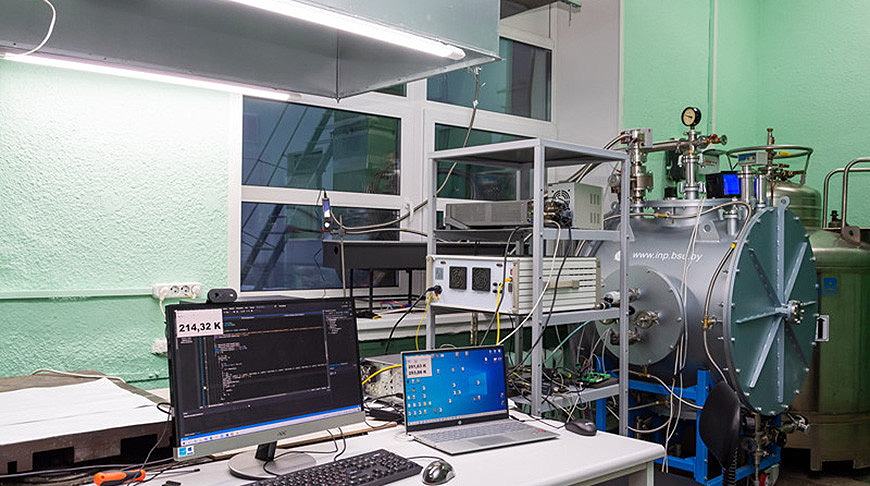Technology developed for NICA became breakthrough in applied field
News, 27 December 2022
Last week, scientists of Institute for Nuclear Problems of Belarusian State University (INP BSU) reported on the results of the first low-temperature tests of the niobium superconducting resonator. These tests allowed them to observe the phase transition to the superconducting state.The work was carried out by order of the Joint Institute within the framework of the NICA Megascience Project.
A team of the Physics and Technology Laboratory of the Institute carried out the tests. The resonator was designed together with scientists of the National Research Nuclear University Moscow Engineering Physics Institute MEPhI. Specialists created parts and welded them using an electron beam in vacuum at the Physical-Technical Institute of the National Academy of Sciences of Belarus. In addition, employees of the INP BSU designed a vacuum cryostat for helium temperatures, provided equipment, and carried out all operations for past and upcoming measurements in the high-frequency area. The cryostat with liquid helium was delivered by road from JINR.
“The work performed has become the restoration of the technology that existed in the USSR and was lost”, Deputy Head of the Accelerator Department of the Laboratory of High Energy Physics JINR Anatoly Sidorin said. “It is important not only for the NICA Project but also for numerous applications. It is a bright example of how the creation of experimental facilities for basic research leads both to the restoration and to the development of advanced technologies.”
As Director of the Institute for Nuclear Problems of BSU Sergey Maksimenko highlighted, in order to complete the work and supply JINR with two niobium resonators, it is necessary to perform a cycle of experiments to measure the Q-factor and operating frequency of the resonators, as well as its adjustment. “After observing the transition to a superconducting state, all members of a large scientific team of the two countries have no doubt about the successful completion of the contract and are confident in the further development of the created technology and its industrial implementation,” he concluded.
The obtained result has become one of the final stages of the five-year joint work of scientists of Institute for Nuclear Problems of BSU, the Physical-Technical Institute of NAS of Belarus, MEPhI, and JINR.
It should be noted that the joint organization of the production of superconducting resonators for scientific accelerator complexes was discussed during the visit of the JINR delegation in 2021, as well as at the joint meeting of the Commission of the Parliamentary Assembly of the Union of Belarus and Russia on Economic Policy and the Commission of the Parliamentary Assembly on Budget and Finance held at JINR.
